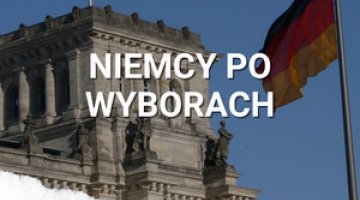Germany: the Greens are open to a coalition with the CDU
In the election to choose the party leaders ahead of the election campaign for the Bundestag in autumn, the Green Party opted for Katrin Göring-Eckardt, the co-chair of the Green Party faction in the Bundestag, and Cem Özdemir, the co-chair of the party. Participation in the vote (conducted by correspondence) reached 59%, which is slightly less than in 2016 (61.7%). Göring-Eckardt received 70.6% of the vote and Özdemir 36%. They both represent a moderate, bourgeois wing of the party, the realos. Göring-Eckardt, who was the only woman standing in the preliminary election to have a nomination secured, will lead the Green Party in the election campaign for the second time. She has a good relationship with CDU politicians and rarely argues with them about their views. Özdemir is branded as a conservative and criticised for his opinions by certain of his fellow party members who believe his views on the integration of foreigners and security policy are characteristic of the CDU.
Commentary
- While filling various positions and nominating candidates for the election, the Green Party has to date sought to strike a balance between its two wings: the realos (to whom Winfried Kretschmann, the prime minister of Baden-Wurttemberg and one of Germany’s ten most popular politicians, also belongs) and the fundis (whose most prominent representative is Jürgen Trittin, one of the two candidates for the position of chancellor in the previous election). The two wings differ, among other issues, in their approach to foreign missions involving the Bundeswehr, migrants, and potential co-operation with the CDU/CSU[R1] . Since there is no representative of the more left-leaning fundis along the two most important candidates, its demands (such as the introduction of a property tax) will be less present in the election campaign and this will increase the likelihood of divisions in the party growing. It may also trigger conflicts which could have a negative impact on the party’s election result.
- The decisions made by the Green Party regarding the nominations indicate that the majority of the party’s members deem the coalition with the CDU to be the most desirable. The selection of the leaders will also make it easier for the party to hold possible talks about a government coalition with the CDU after the election to the Bundestag. According to current opinion polls, the CDU cannot expect to win a majority in parliament (according to survey by Emnid on 23rd January, the CDU/CSU could receive 36% of the vote, the SPD 21%, the AfD 12%, the Left Party 11%, the Green Party 9% and the FDP 6%). Both Göring-Eckardt and Özdemir will not categorically rule out participation in another possible coalition (e.g. with the SPD and the Left Party). They are interested, above all, in seeing the Greens become part of the government.
- The selection of the candidates from one wing of the party makes it more likely for the party’s manifesto in the election campaign to be more cohesive than in previous campaigns. The party’s platform, which focuses on environmental protection and education as well as security, may also become acceptable for centrist voters. This will enable voters to vote deliberately for the CDU/Greens coalition by selecting the CDU on party lists and choosing a particular candidate on the Green Party list (or otherwise), which is made possible in Germany’s voting system.




